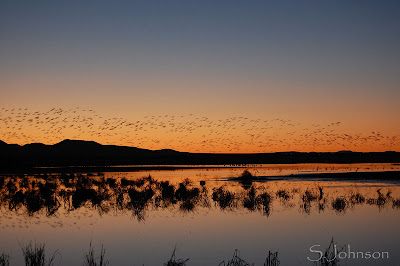Ever since I was a kid, I've had a fascination with rock art made by prehistoric cultures. I was probably first exposed to it on one of our many camping trips through the southwest. Many, if not all, of the ancient peoples living in the southwest created images on the most durable and readily available canvas: rocks. Archaelogists have studied, described and attempted to explain the meaning of the images painted or pecked into the rocks, but ultimately, much of it remains an enigma.
In the southern region of AZ, the most well-known prehistoric culture inhabiting the area around Phoenix, Tucson and as far east as the Tombstone area were the Hohokam. They were an agrarian culture, with their villages located near water sources now known as the Gila, Salt and San Pedro rivers, and probably lived in the area for perhaps 500-700 years, around 1000 AD. It is a testament to their resourcefulness, intelligence, toughness and respect for the land that they were able to survive for so long in such a harsh and unforgiving climate. For reasons unknown, they disappeared before history began (read: the Coronado expedition in the mid 16th century). Their living descendants may be the native people that were occupying the land during Coronado's travels - the Tohono O'Odham (formerly known as the Pima and Papago).
In addition to finding Hohokam village ruins throughout the region, there are numerous areas of rock art panels found. What is interesting is that they generally were not found in the same locations as the villages. I recently finished reading a book on the Hohokam rock art of South Mtn., located in Phoenix, which is at least a few miles away from the Gila river. Hundreds of panels are present in these mountains, usually near drainages or other water sources.
Prior to and after reading this wonderful book (I will have to provide the author/title in a later post), I've been visiting sites of rock art, and of course, taking lots of photos. The book provided some useful terms used to describe the images, so I'll be using those in my descriptions as well.
A quick primer on rock art: "pictograph" - refers to images painted onto the surface of a rock, as with the Mogollon rock art panel shown in the Council Rocks post. "Petroglyph" refers to images actually tapped, or pecked, onto the surface of the rock, using a set of rock tools (hammer and chisel). The superficial, patinated layer of rock is removed, exposing the pale underlying rock. The degree of repatination (due to the combined effects of water, sun and time interacting with the mineral layers of the rock) can help date the petroglyph.
Whatever the reason the Hohokam created these delightful and fascinating abstract designs may never be known, but art is art, so I am pleased to be able to share the work of artists long since gone, but whose spirit remains with us generations later. Enjoy!
Location: adjacent to the San Pedro River, off of Charleston Rd., ~10 miles southwest of Tombstone. These panels were on an outcropping of rocks along the trail, perhaps 1/4 a mile east of the river.
Mixed panel
A spiral - a common Hohokam design - is seen to the upper left. A series of connected, curving lines and shapes, along with a linear ladder-type design are seen to the right. Below the rock fissure a few anthropomorphs (human-shaped), quadrupeds (generic four-legged animals) and a snake form are seen, and the snake appears to be connected to a cross and other curved lines.

Mixed panel, detail
Spirals are thought to possibly represent visions or dreams by shamans.

Mixed panel #2
More anthropomorphs, and what appear to be either faces with headdress or prints (bear?) are seen, along with some anthropomorphs and a circled cross - another common motif seen.

Sun design, quadruped and lizard(?)
Quadruped is either a bighorn sheep or deer; the Hohokam typically gave their ungulate forms long, upright tails and horns that often pointed in the wrong direction.

Unknown animal form
This could be a reptile with toe detail. The branching of the tail could be demonstrating movement. The design below looks as if it were rubbed out. There is something that looks like a "crossed ribbon" design (looks almost just like the pink breast cancer ribbon design on the flash drive stick I'm using now!)

Vertical panel
This block/ladder pattern makes use of the orientation of the rock, and originates with some unidentifiable figures above. Given that the Hohokam were not cliff dwellers like the Anasazi, the image is probably not a ladder.




















































